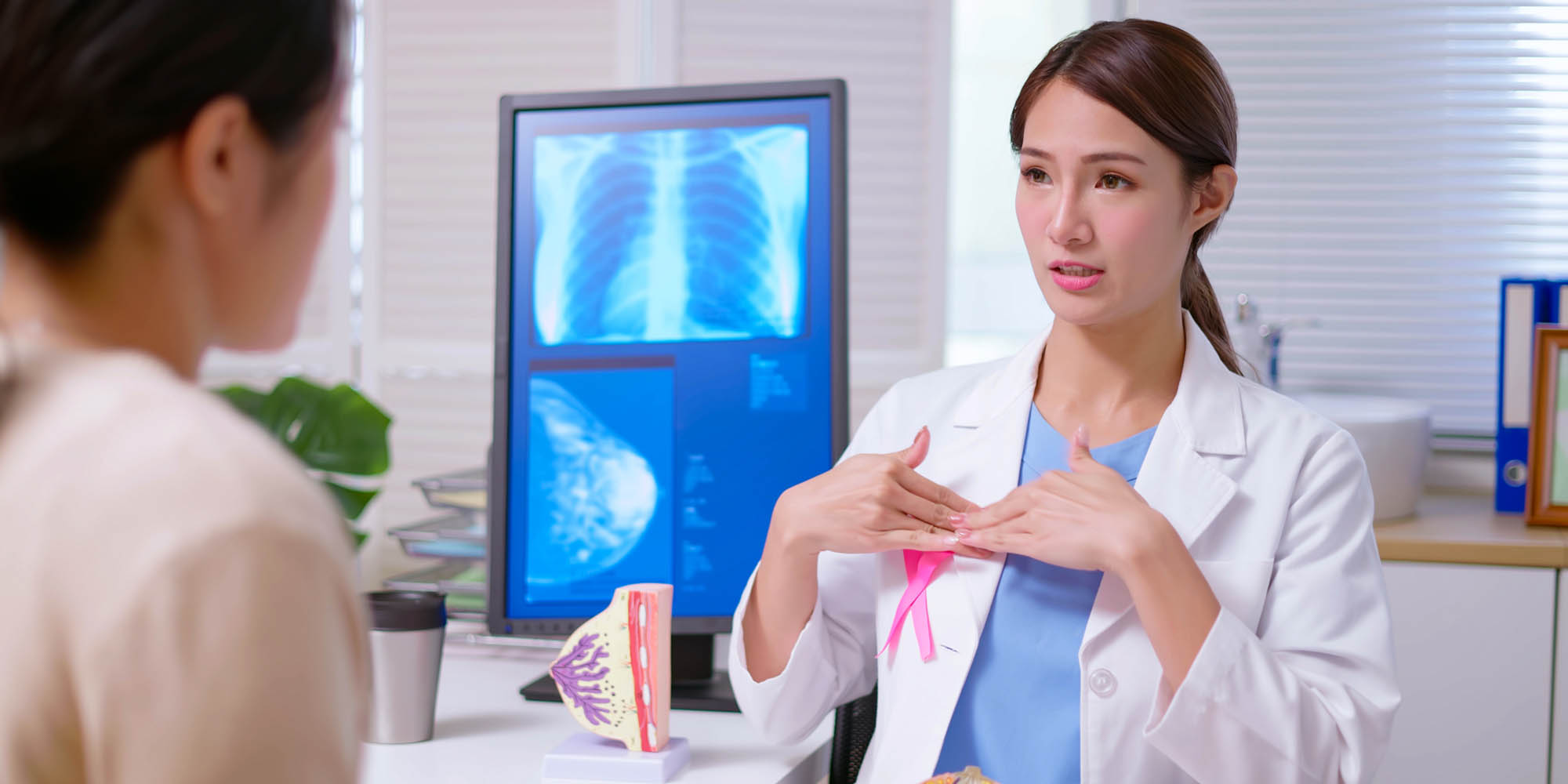Breast Self-Awareness and Exams: Tips for Better Understanding
April 14, 2025
Categories: breast cancer, breast self exam
 By Priya Bhakta, MD, Breast Surgery
By Priya Bhakta, MD, Breast Surgery
Breast self-awareness, including breast self-exams, is an easy, proactive way to monitor your breast health. While they do not replace imaging screenings like mammograms, they help you become more familiar with the normal look and feel of your breasts, making it easier to detect changes.
Breast self-exams are especially valuable for young women under 40, who may not yet qualify for mammogram screenings. The key to successful self-breast awareness is consistency and knowing what is normal for you.
Why breast awareness matters
While the idea of performing a breast self-exam can feel intimidating, it’s one of the simplest ways to take charge of your breast health.
- Early detection leads to better outcomes. Breast cancer has a higher chance of being treatable if found in its earliest stages.
- Self-examination increases breast awareness. Getting familiar with your breast anatomy helps you identify normal lumps, textures, and variations so you can spot any unusual changes.
- Self-breast exams complement, not replace, mammograms. Even if you perform monthly self-exams, you should still follow mammogram guidelines and schedule routine clinical breast exams.
According to Priya Bhakta, MD, a breast surgeon at Loyola Medicine, self-exams play a critical role in breast self-awareness. "We recommend starting at age 25 — looking for skin changes, masses, and other abnormalities. I've seen many patients discover something abnormal this way, leading to further evaluation," she says.
When and how often should you perform a breast self-exam?
- Best time: A few days after your menstrual period ends, when your breasts are least swollen or tender.
- For postmenopausal women: Pick the same day each month for consistency.
- How often: Once a month. Checking too frequently can make it harder to notice real breast changes over time.
Step-by-step guide to performing a breast self-exam
Option 1: Visual inspection in the mirror
- Stand in front of a mirror with your arms at your sides.
- Look for any visible breast changes such as skin dimpling, swelling, or nipple retraction.
- Repeat the check with your arms raised.
- Press your hands on your hips and lean slightly forward to check for irregular movement or shape.
Option 2: Examination while lying down, standing, or in the shower
Lying down
Lying down allows breast tissue to spread out evenly, making it easier to feel for lumps or changes.
- Use the pads of your three middle fingers, not the tips, to examine each breast.
- Apply light, medium, and firm pressure to feel different layers of tissue.
- Move your fingers in small, circular motions, covering the entire breast from collarbone to underarm.
- Pay extra attention to the upper outer area, where breast density is highest.
Standing in front of mirror or in the shower:
Many women find it easiest to check their breasts in the shower because wet, soapy skin allows fingers to glide more smoothly.
- Use the same circular motions as you would lying down.
- Check the underarm area where lymph nodes are located.
What to look for: breast changes that may need medical attention
It’s normal for breasts to feel somewhat lumpy or firm in certain areas, especially near the upper outer quadrant. But if you notice any of the following breast changes, contact your doctor.

Even if a lump does not hurt, it should still be checked by a doctor. Not all lumps are cancerous — some may be benign cysts or fibrous tissue — medical imaging can help confirm.
Breast self-exams/awareness vs. mammograms: what’s the difference?
While breast self-awareness helps you detect changes, they are not a substitute for imaging screenings. You should still receive mammograms starting at age 40 on an annual basis if you are at average risk for breast cancer. It is recommended that a risk assessment is performed starting at the age of 25, to determine if you start earlier.
Dr. Bhakta explains, "Self-exams are important and if you notice something unusual, diagnostic imaging can be done at any age.”
Additional screening methods for high-risk women, include:
- Breast MRI
- Ultrasound
- Genetic testing (if family history suggests risk)
Overcoming anxiety about self-exams and mammogram screenings
Many women avoid breast exams due to fear — either of finding something concerning or the discomfort of medical screenings. Knowing what to expect can help reduce your anxiety.
- Remind yourself: Finding breast changes early increases treatment success.
- Practice regularly: The more you perform self-exams, the more comfortable you’ll feel.
- Talk to others: Hearing about other women’s experiences can help normalize the process.
- Ask your doctor questions: If you’re unsure about what’s normal, schedule a clinical breast exam for guidance.
Dr. Bhakta reassures, "Your first mammogram or breast self-exam might feel intimidating, but our goal as health care professionals is to make you feel as comfortable as possible. Knowing your body is empowering."
Making breast self-exams and increasing breast awareness is a simple yet powerful way to monitor your health. While they don’t replace mammograms, they help you detect changes and take proactive steps when needed.
Dr. Priya Bhakta is a skilled breast surgeon at Loyola Medicine, specializing in the diagnosis and treatment of breast cancer. With a passion for early detection and breast health awareness, Dr. Bhakta is dedicated to providing compassionate care to her patients. She emphasizes the importance of breast self-awareness and works closely with her patients to develop personalized treatment plans. Dr. Bhakta has extensive experience in performing both minimally invasive and surgical procedures, ensuring the best possible outcomes for those in her care.
To learn more about how Loyola Medicine helps patients prevent, manage and treat breast cancer, or to schedule an appointment, visit loyolamedicine.org/breastcancer
